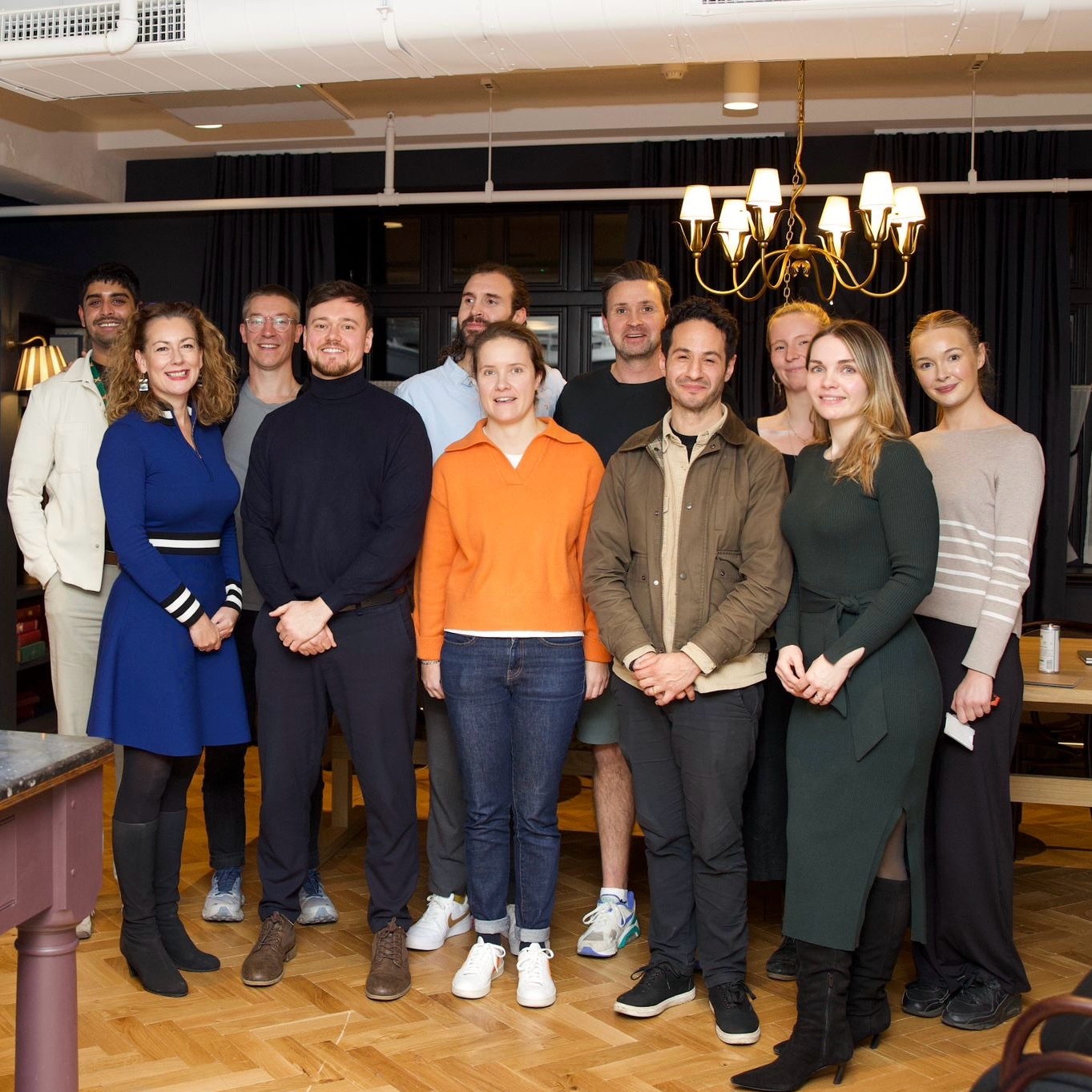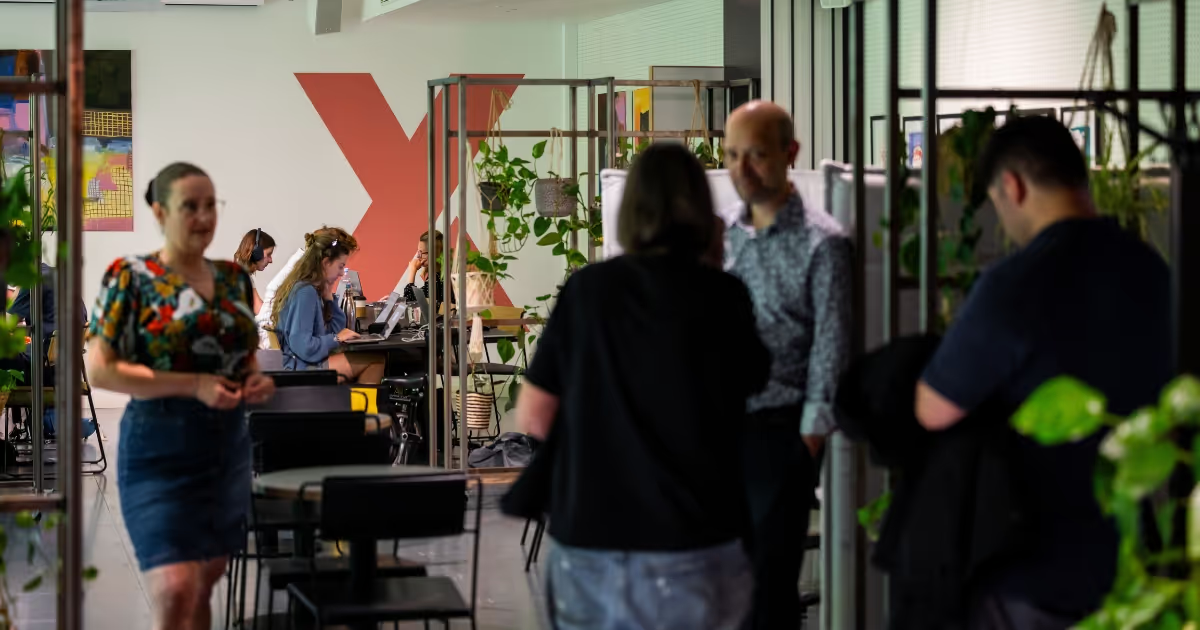Technology often receives more than its fair share of bad press - from its insidious impact on our communities to our health. However, these same tools are also responsible for transforming societies for the better, including lowering mortality rates, improving access to education, connecting people across borders and elevating standards of living around the globe. In the next few decades, technology looks set to deliver exponential rates of progress and intelligence, and innovation, skills and labour fluidity will be key to the good social outcomes of technology adoption.
Technology often receives more than its fair share of bad press - from its insidious impact on our communities to our health. However, these same tools are also responsible for transforming societies for the better, including lowering mortality rates, improving access to education, connecting people across borders and elevating standards of living around the globe. In the next few decades, technology looks set to deliver exponential rates of progress and intelligence, and innovation, skills and labour fluidity will be key to the good social outcomes of technology adoption.
{{divider}}
The development and adoption of advanced technologies including smart automation and artificial intelligence has the potential not only to raise productivity and GDP growth but also to improve wellbeing more broadly, including through healthier life and longevity and more leisure. Alongside such benefits, these technologies also have the potential to reduce disruption and the potentially destabilising effects on society arising from their adoption.
{{divider}}
For centuries, technology has both excited the human imagination and prompted fears about its effects. Today’s technology cycle is no different, provoking a broad spectrum of hopes and fears. Intrinsically, technology is neither good nor bad - it’s not just what we use, but how and why we use something, context is everything.
{{divider}}
In our age, frontier technologies such as the Internet of Things, smart robotics, automation, and AI are exponentially boosting productivity and growth. It’s been able to make the world a more prosperous place while replacing mundane or dangerous tasks. Time frame is just as important as reason for use. While technology adoption may be disruptive in the short term, especially in relation to jobs and incomes, technology itself could be put to use to help smooth those same disruptions.
{{divider}}
For example, while technology can increase the cost of healthcare through expensive new treatments such as cell therapy, it could also improve efficiency in the health system by identifying and eliminating areas of waste. In the workplace, while automation could displace many jobs, digital platforms can equip workers with new skills and match employers and job seekers more effectively than traditional labor-market mechanisms, potentially reducing the time spent between jobs and improving productivity. By deploying ‘Tech For Good’, businesses and governments can help ease the workforce transitions that the acceleration of technology innovation itself creates.
{{divider}}
Some examples of Tech For Good include: Advanced Analytics and AI - which can ensure that help is targeted at the right people most effectively. AI capabilities including natural language processing can be used to tailor classes to individual students, for example, adjusting for their level of understanding and measuring their progress. AI can also significantly reduce administrative burdens on teachers, freeing up time for interaction with students.
{{divider}}
Connectivity and platforms, including the mobile internet, are other core applications - platforms are already widely used to improve the matching of employers and workers, create new forms of independent work, and raise skill levels—thereby addressing critical issues of job security and material living standards. Mobile connectivity and platforms can also be used in digital finance and telemedicine, for example, giving millions of people the opportunity to access services from which they have been excluded.
{{divider}}
In the realm of Robotics, there are many especially significant enablers of equal opportunities and environmental sustainability. Advanced robotics, such as exoskeletons and wheelchairs with tablet and voice control, can help people with specific disabilities to communicate with others and increase mobility, for example.
{{divider}}
Improving Workplace Security
{{divider}}
While one of the more recent focuses on the impact of technology looks into its ability to displace humans in the workplace, in the long term it can also help to make jobs more secure - positively impacting mental health, wellbeing and economic prosperity. In delivering innovation that is valued by the economy, it increases the demand for labour - while some jobs are lost, others are created. For example social media management is a job role that didn’t exist just a few short years ago.
{{divider}}
Technology can also make a significant contribution to workforce fluidity, helping people retrain and businesses redeploy human resources, while minimising the time and cost of displacement. Smart talent platforms can also reduce the length of time people spend between jobs and improve their earnings prospects. The development of platforms and other remote working tools, such as online help desks, videoconferences, and simultaneous shared access to documents, can allow many more people to work independently.
{{divider}}
Economic Prosperity
{{divider}}
As with job security, automation and AI could have a negative effect on material living standards if adoption leads to job losses with resulting loss of income. Technology adoption could also put downward pressure on wages and increase inequality. At the same time, technology can improve material living standards, by providing access to cheaper and better products and through generating new sources of income.
{{divider}}
Technology can support innovation by developing platforms of local ecosystems of smaller firms. Connectivity platforms such as eBay and Etsy allow individuals and small businesses to generate additional source of income with lower intermediation costs than traditional retail channels.
{{divider}}
Platforms can also help reduce the bill for essential goods, including education, housing, and electricity, by allowing consumers to find affordable goods and services. The French site CrossShopper and others offer deals to customers by matching prices of all local retail competitors and major online competitors, and they allow easy switching between providers (including utilities).
{{divider}}
Finally, technology can optimise social transfer models. Mobile internet and connectivity platforms allow greater reach of public services. Digital IDs allow people everywhere who lack a legally recognised form of identification to gain access to banking, government benefits, education, and other critical services.
{{divider}}
Health And Wellbeing
{{divider}}
Technology could pioneer paradigm shifts within the realms of healthcare. The possibilities range from AI-powered drug research, which is pushing the frontiers of drug discovery, to personal lifestyle wearables that can help individuals monitor their health and track improvements. Technology can also ease access to health, including through telemedicine, and create new efficiencies and reduce waste in healthcare systems, whose rising costs are increasingly affecting living standards and putting pressure on public finances in some countries.
{{divider}}
AI already shows results in applications ranging from diagnosis of pneumonia, malaria, or Alzheimer’s to prediction of strokes and heart attacks, or of autism in infants. Robotics, meanwhile, has potential in surgery. One UK-based startup that has partnered with several large drug makers, Exscientia, applies AI capabilities to test new drug molecules based on massive data sets. This allows drug makers to experiment with products based on similar molecules, speeding up drug development while reducing cost.
{{divider}}
At a personal level, lifestyle wearables and fitness trackers could contribute to improving health for many individuals and help healthcare professionals monitor patients on a continuous basis, for example by providing blood glucose readings, remotely. Technology can also be an important tool for improving public health by bringing greater efficiency to complex health systems.
{{divider}}
Up-skilling and Education
{{divider}}
Better education and access to high quality tools for learning and development are crucial for positive economic and societal welfare outcomes. Skills that are distinctly human such as connection, creativity, emotional intelligence, adaptability, the ability to negotiate, entrepreneurship, and initiative taking, will experience a steep increase in demand.
{{divider}}
AI could become a valuable tool for teachers, with functions including grading exams and coursework. Technological applications can also improve the efficiency of learning tools. Examples of this range from using chatbots in the classroom to ask for student feedback to more sophisticated programs of adaptive learning that adjust teaching to the abilities and preferences of individual students.
{{divider}}
Sustainable Sustainability
{{divider}}
The increasing depletion of natural resources, rising incidence of extreme weather conditions, and growing pollution in oceans make for daily headlines and calls for action. AI-based traffic management in cities, including optimising traffic light networks to improve the flow of cars and trucks can reduce the impact of pollution on our health. Cities are also using technologies to optimise waste pickup, and reduce greenhouse gas emissions through energy efficiency, renewable energy sources, along with battery and control technologies for balancing supply and demand.
{{divider}}
Electric utilities could use smart grid technology to improve system efficiency, AI and IoT help reduce energy consumption through automated management of operations and technologies such as Google’s Deep Mind helped reduce the cooling bill at Google’s data centres by up to 40%. Smart building technologies can also optimise energy consumption and monitor indoor air quality for improved physical well-being.
{{divider}}
The circular economy’s new services and business models are also largely facilitated by digital platforms, and it also has a role to play in conserving biodiversity. AI-powered drones can help monitor wildlife parks and identify the location of poachers, and similarly monitor for illegal fishing.
{{divider}}
There are two key dimensions that could make a crucial difference to the impact of technology transitions on welfare. The first is the focus of technology deployment, whether it is used primarily for innovation and growth or for labor reduction and cost cutting. The second is the degree to which the transition effects of technology adoption are actively managed, through retraining, labour mobility, and talent matching, among other measures.
{{divider}}
Governments can be instrumental in ensuring that technology transitions are well managed and in encouraging innovative development and use of technologies. However individuals and civil society can also contribute to the overall focus on proactive management of technology by helping build a Tech for Good ecosystem. They can contribute to data collection initiatives, including through open-data platforms, and joining crowdsourcing initiatives.
{{divider}}
Companies can harness the benefits of the current technology wave by adopting an approach of enlightened self-interest. At the company level, a workforce that is better trained, less stressed, healthier, and happier will also be more productive, more adaptable, and better able to drive the technology adoption and innovation surge that will boost revenue and earnings. The world of Tech For Good is an apt demonstration of the promising potential that lies behind the combination of humans and technology - where it’s possible to do good, deliver better and live well.
{{divider}}





.png)
.avif)


.avif)


.avif)
.avif)



